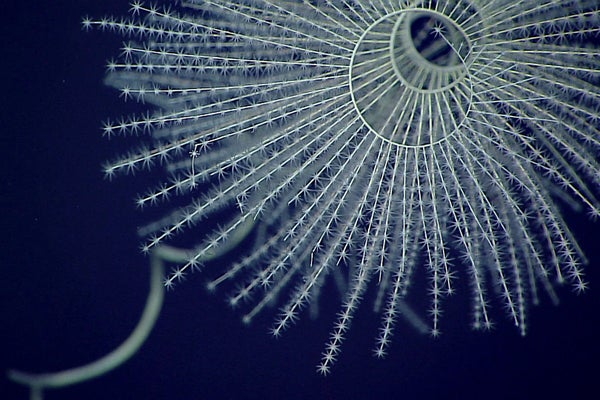Glow-in-the-Dark Animals May Have Been Around for 540 Million Years
Ancestors of so-called soft corals may have developed bioluminescence in the earliest days of deep-ocean living
A deep-sea bioluminescent soft coral called Iridogorgia magnispiralis.
NOAA Office of Ocean Exploration and Research/Deepwater Wonders of Wake
The more humans have explored the deep oceans, the more examples we’ve found of animals with a seemingly magical talent: the ability to produce their own light, a feat called bioluminescence.
To scientists, the regular presence of bioluminescence makes sense. It’s surprisingly common, with various bioluminescence mechanisms having evolved perhaps around 100 separate times over the course of hundreds of millions of years. And new research published on April 23 in Proceedings of the Royal Society B traces bioluminescence in the family tree of strange animals called octocorals, a group that includes “soft corals,” suggesting that the phenomenon evolved in the sea about 540 million years ago—making it more than twice as old as a previous estimate.
For animals, especially those that live in parts of the oceans that are deeper than sunlight can reach, bioluminescence can make the difference between life and death: for example, it can be employed as a tool to lure prey and deter predators, among other uses.Biologists are still working to understand the full scope of the phenomenon’s importance. “We’ve explored so little of our own planet, and there could be so many more organisms down there that are using light in ways we haven’t even begun to understand yet,” says marine biologist Edith Widder, CEO and senior scientist at the nonprofit Ocean Research & Conservation Association. “That’s what intrigues me the most about bioluminescence: how animals use it to survive.”
On supporting science journalism
If you’re enjoying this article, consider supporting our award-winning journalism by subscribing. By purchasing a…
Read the full article here







